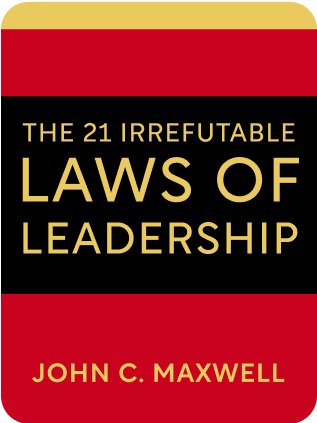

This article is an excerpt from the Shortform book guide to "The 21 Irrefutable Laws Of Leadership" by John C. Maxwell. Shortform has the world's best summaries and analyses of books you should be reading.
Like this article? Sign up for a free trial here .
What is the Law of Navigation? What do you think distinguishes a leader from a regular person?
The Law of Navigation is John C. Maxwell’s fourth law of leadership. At its core, the Law of Navigation is all about having a vision for your business and navigating towards it, correcting the course along the way.
Keep reading for Maxwell’s guidelines on how to implement the Law of Navigation.
The Law of Navigation Is About More Than Steering the Ship
Leaders plan and anticipate because they’re always aware that their followers depend on them. Leaders of large organizations particularly need to keep this law in mind. Decisions affect more people, and it’s more difficult to coordinate changes, with a larger team.
Here are some guidelines to using the Law of Navigation:
● Reflect on past experiences, particularly failures.
○ Past successes remind you that you’re competent and give you confidence. ○ Past failures teach you where you’re weak and need to improve.
○ Pitfall alert! Many natural leaders tend to focus on the future rather than the past, so regularly remind yourself to take the time to reflect.
● Examine the current conditions. Before making a decision, take all factors into account, both quantitative and qualitative. Morale is just as relevant as finances.
● Source information from others. You will never personally know everything. Talk to leaders and followers both within and outside of your organization, and seek out mentors.
● Be optimistic but also realistic. Leaders need to believe that they can achieve their goals. However, they must also seriously consider obstacles. If you don’t acknowledge potential problems, you can’t plan how to surpass them.
In addition to the four guidelines above, John C. Maxwell created a 9-step planning process to project completion. When Maxwell was leading a church in 1975, he encountered a problem—the church’s attendance had more than doubled, and the building was too small to accommodate everyone. He executed the following steps to achieve the goal:
- Choose a course of action
- Build a new auditorium
- Determine your goals
- Design the new auditorium
- Build it
- Pay for it within ten years
- Get all of the congregation on board (the church’s previous building proposal had been divisive)
- Consider priorities
- Determine the requirements of the auditorium
- Consider budget constraints
- Communicate with key members of your organization
- Meet with key leaders
- Create and distribute a report to the congregation
- Allow time for everyone to get on board with the idea
- Schedule a congregational meeting for two months after starting step #4
- Officially propose the project
- a. Present the project at the congregational meeting
- There will be problems—accept and anticipate this
- Accept and anticipate problems, and cover questions before they’re asked
- Answer questions that come up
- Keep successes in mind
- Write and share good news reports
- Review and adjust your plan every day
- Periodically review the schedule and plans to make sure everything’s going smoothly
Example of a Successful Application of the Law: Roald Amundsen
In 1911, two explorations raced to the South Pole. One was led by Norweigan explorer Roald Amundsen.
Amundsen was a planner. He spoke with other Arctic explorers and copied their methods. He recruited skiers and dog handlers, selected the best available gear, and spent countless hours setting up supply depots. His team travelled six hours a day by dogsled and reached the South Pole more than a month before his competitor’s team.
Example of a Failed Application of the Law: Robert Falcon Scott
The second expedition to the South Pole was led by British naval officer Robert Falcon Scott. Scott approached the journey very differently to Amundsen. He chose to travel by motorized sledges and ponies. The sledges stopped working after five days and the ponies didn’t survive the cold temperatures, so Scott’s men had to carry their supplies themselves. Scott hadn’t secured good gear, and his men suffered from frostbite and snow blindness. Scott also hadn’t properly located or stocked his supply depots, so everyone was dehydrated and hungry (which was exacerbated by Scott having decided to bring a fifth man at the last minute, when he’d only prepared enough supplies for four). Scott’s expedition did make it to the South Pole, but everyone died on the journey back.

———End of Preview———
Like what you just read? Read the rest of the world's best book summary and analysis of John C. Maxwell's "The 21 Irrefutable Laws Of Leadership" at Shortform .
Here's what you'll find in our full The 21 Irrefutable Laws Of Leadership summary :
- Why working with people is the only way to do meaningful work
- How to become the kind of person that can get things done
- Why you don't need to be good at all the laws of leadership to be a good leader






